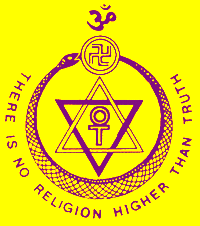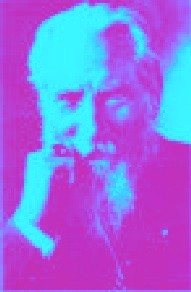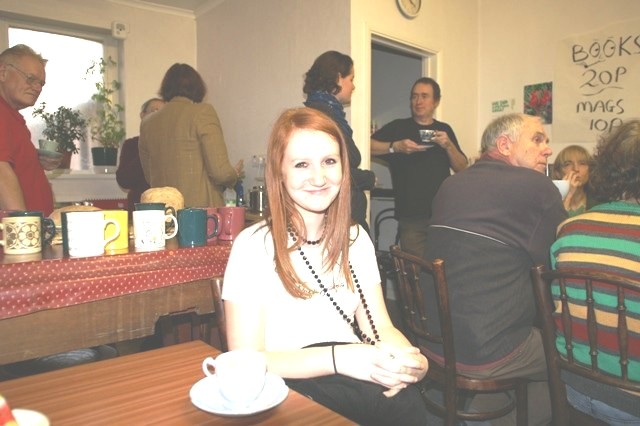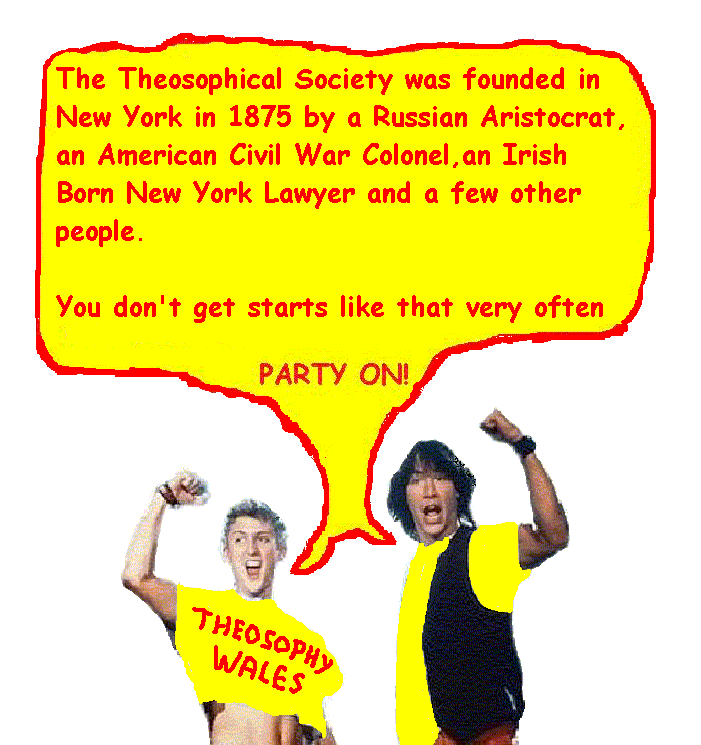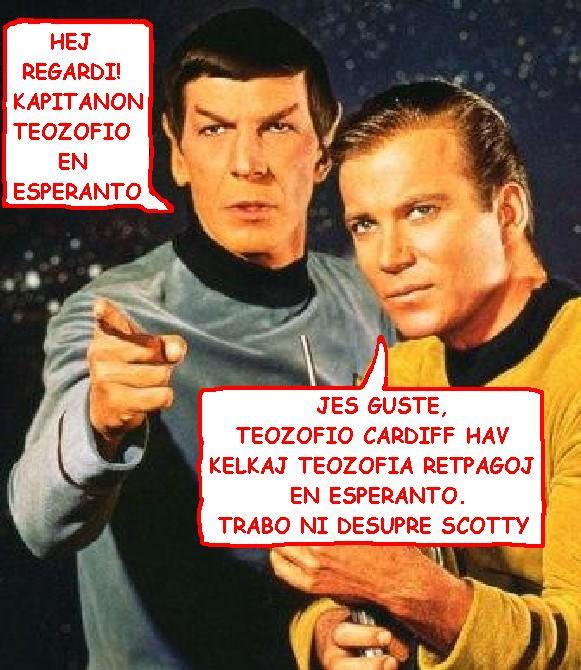A FREE INTRO TO THEOSOPHY
The Constitution of Man
By
Charles Webster Leadbeater
From
A Textbook of Theosophy
By
C
Man is
therefore in essence a Spark of the divine Fire, belonging to the monadic
world. (The President has now decided upon a set of names for the planes, so for
the future these will be used instead of those previously employed. A table of
them is given below for reference) To that Spark, dwelling all the time in that
world, we give the name “Monad”. For the purpose of human evolution Monad
manifests itself in lower worlds. When it descends one stage and enters the
spiritual world, it shows itself there as the triple Spirit, having itself
three aspects (just as in worlds infinitely higher the Deity has His three
Aspects.) Of those three - one remains always in that world, and we call that
the Spirit in man. The second aspect manifests itself in the intuitional world,
and we speak of it as the Intuition in man. The third shows itself in the
higher mental world, and we call it the Intelligence in man. These three aspects
taken together constitute the ego which ensouls the
fragment from the group-soul.
Thus man as
we know him
New Names & Old Names
1 Divine World Âdi
Plane
2 Monadic World Anupâdaka
3 Spiritual World Âtmic
or Nirvânic Plane
4 Intuitional World Buddhic Plane
5 Mental World Mental Plane
6 Emotional or Astral World Astral Plane
7 Physical World Physical Plane
reality a
Monad residing in the monadic world, shows himself as an ego in the higher
mental world, manifesting these three aspects of himself (Spirit, Intuition and
Intelligence) through that vehicle of higher mental matter which we name the
casual body.
This ego is
the man during the human stage of evolution; he is the nearest correspondence,
in fact, to the ordinary unscientific conception of the soul. He lives
unchanged (except for his growth) from the moment of individualization until
humanity is transcended and merged into divinity. He is in no way affected by what
we call birth and death; what we commonly consider as his life is only a day in
his life. The body which we can see, the body which is born and dies, is a
garment which he puts on for the purposes of a certain part of his evolution.
Nor is it the
only body which he assumes. Before he, the ego in the higher mental world, can
take a vehicle belonging to the physical world, he must make a connection with
it through the lower mental and astral worlds. When he wishes to descend he
draws around himself a veil of the matter of the lower mental world, which we
call his mental body. This is the instrument by means of which he thinks all
his concrete thoughts – abstract thought being a power of the ego himself in
the higher mental world.
Next he draws
round himself a veil of astral matter, which we call his astral body; and that
is the instrument of his passions and emotions, and also (in conjunction with
the lower part of his mental body) the instrument of all such thought as is
tinged by selfishness and personal feeling. Only after having assumed these
intermediate vehicles can he come into touch with a baby physical body, and be
born into the world which we know. He lives through what we call his life,
gaining certain qualities as the result of its experiences; and at its end,
when the physical body is worn out, he reverses the process of descent and lays
aside one by one the temporary vehicles which he has assumed.
The first to
go is the physical body, and when that is dropped, his life is centered in the
astral world and he lives in his astral body.
The length of
his stay in that world depends upon the amount of passion and emotion which he
has developed within himself in his physical life. If there is much of these the
astral body is strongly vitalized, and will persist for a long time; if there
is but little, the astral body has less vitality, and he will soon be able to
cast that vehicle aside in turn.
When that is
done he finds himself living in his mental body. The strength of that depends
upon the nature of the thoughts to which he had habituated himself, and usually
his stay at this level is a long one. At last it comes to an end, he casts
aside the mental body in turn, and is once more the ego in his own world.
Owing to lack
of development, he is as yet but partially conscious in that world; the
vibrations of its matter are too rapid to make any impression upon him, just as
the ultraviolet rays are too rapid to make any impression upon our eyes. After
a rest there, he feels the desire to descend to a level where the undulations
are perceptible to him, in order that he may feel himself to be fully alive; so
he repeats the process of descent into denser matter, and assumes once more a
mental, an astral and a physical body. As his previous bodies have all
disintegrated, each in its turn, these new vehicles are entirely distinct from
them, and thus it happens that in his physical life he has no recollection
whatever of other similar lives which have preceded it.
When
functioning in this physical world he remembers by means of his mental body;
but since that is a new one, assumed only for this birth, it naturally cannot
contain the memory of previous births in which it had no part. The man himself,
the ego, does remember them all when in his own world, and occasionally some
partial recollection of them or influence from them filters through into his
lower vehicles. He does not usually, in his physical life, remember the
experiences of earlier lives, but he does manifest in physical life the
qualities which those experiences have developed in him. Each man is therefore
exactly what he has made himself during those past lives; if he has in them
developed good qualities in himself, he possesses the good qualities now; if he
neglected to train himself, and consequently left himself weak and of evil
disposition, he finds himself precisely in that condition now. The qualities,
good or evil, with which he is born are those which he has made for himself.
This
development of the ego is the object of the whole process of
materialization; he assumes those veils
of matter precisely because through them he is able to receive vibrations to
which he can respond, so that his latent faculties may thereby be unfolded.
Though man
descends from on high into these lower worlds, it is only through that descent
that a full cognizance of the higher worlds is developed in him. Full
consciousness in any given world involves the power to perceive and respond to
all the undulations of that world; therefore the ordinary man has not yet
perfect consciousness at any level – not even in this physical world which he
thinks he knows. It is possible for him to unfold his percipience in all these
worlds, and it is by means of such developed consciousness that we observe all
these facts which I am now describing.
The causal
body is the permanent vehicle of the ego in the higher mental world. It
consists of matter of the first, second and third subdivisions of that world.
In ordinary people it is not yet fully active, only that matter which belongs
to the third subdivision being vivified. As the ego unfolds his latent
possibilities through the long course of his evolution, the higher matter is
gradually brought into action, but it is only in the perfected man whom we call
the Adept that it is developed to its fullest extent. Such matter can be
discerned by clairvoyant sight, but only by a seer who knows how to use the
sight of the ego.
It is
difficult to describe a causal body fully, because the senses belonging to its
world are altogether different from and higher than ours at this level. Such
memory of the appearance of a causal body as it is possible for a clairvoyant
to bring into his physical brain represents it as ovoid, and as surrounding the
physical body of the man, extending to a distance of about eighteen inches from
the normal surface of that body. In the case of primitive man it resembles a
bubble, and gives the impression of being empty. It is in reality filled with
higher mental matter, but as this is not yet brought into activity it remains
colorless and transparent. As advancement continues it is gradually stirred
into alertness by vibrations which reach it from the lower bodies. This comes
but slowly, because the activities of man in the earlier stages of his
evolution are not of a character to obtain expression in matter so fine as that
of the higher mental body; but when a man reaches the stage where he is capable
either of abstract thought or of unselfish emotion the matter of the causal body
is aroused into response.
When these
rates of undulation are awakened within him they show themselves in his causal
body as colors, so that instead of being a mere transparent bubble it gradually
becomes a sphere filled with matter of the most lovely and delicate
hues – an
object beautiful beyond all conception. It is found by experience that these
colors are significant. The vibration which denotes the power of unselfish
affection shows itself as a pale rose-color; that which indicates high
intellectual power is yellow; that which expresses sympathy is green, while
blue betokens devotional feeling, and a luminous lilac-blue typifies the higher
spirituality. The same scheme of color significance applies to the bodies which
are built of denser matter, but as we approach the physical world the hues are
in every case by comparison grosser – not only less delicate but also less
living.
In the course
of evolution in the lower worlds man often introduces into his vehicles
qualities which are undesirable and entirely inappropriate for his life as an
ego – such, for example, as pride, irritability, sensuality. These, like the
rest, are reducible to vibrations, but they are in all cases vibrations of the
lower subdivisions of their respective worlds, and therefore they cannot
reproduce themselves in the casual body, which is built exclusively of the
matter of the three higher subdivisions of its world. For each section of the
astral body acts strongly upon the corresponding section of the mental body,
but only upon the corresponding section; it cannot influence any other part. So
the casual body can be affected only by the three higher portions of the
astral body; and the oscillations of
those represent only good qualities.
The practical
effect of this is that the man can build into the ego (that is, into his true
self) nothing but good qualities; the evil qualities which he develops are in
their nature transitory and must be thrown aside as he advances, because he has
no longer within him matter which can express them. The difference between the
causal bodies of the savage and the saint is that the first is empty and
colorless, while the second is full of brilliant coruscating tints. As the man
passes beyond even sainthood and becomes a great spiritual power, his causal
body increases in size, because it has so much more to express, and it also
begins to pour out from itself in all directions powerful rays of living light.
In one who has attained Adeptship this body is of
enormous dimensions.
The mental
body is built of matter of the four lower subdivisions of the mental world, and
expresses the concrete thoughts of the man. Here also we find the same color
scheme as in the casual body. The hues are somewhat less delicate, and we
notice one or two additions. For example, a thought of pride shows itself as
orange, while irritability is manifested by a brilliant scarlet.
We may see
here sometimes the bright brown of avarice, the grey-brown of selfishness, and
grey-green of deceit. Here also we perceive the possibility of a mixture of
colors; the affection, the intellect, the devotion may be tinged by
selfishness, and in that case their distinctive colors are mingled with the
brown of selfishness, and so we have an impure and muddy appearance. Although
its particles are always in intensely rapid motion among themselves, this body
has at the same time a kind of loose organization.
The size and
shape of the mental body are determined by those of the causal vehicle. There
are in it certain striations which divide it more or less irregularly into
segments, each of these corresponding to a certain department of the physical
brain, so that every type of thought should function through its duly assigned
portion. The mental body is as yet so imperfectly developed in ordinary men
that there are many in whom a great number of special departments are not yet
in activity, and any attempt at thought belonging to those departments has to
travel round through some inappropriate channel which happens to be fully open.
The result is that thought on those subjects is for those people clumsy and
uncomprehending. This is why some people have a head for mathematics and others
are unable to add correctly – why some people instinctively understand,
appreciate and enjoy music, while others do not know one tune from another.
All the
matter of the mental body should be circulating freely, but sometimes a man
allows his thought upon a certain
subject to set and solidify, and then the circulation is impeded, and there is congestion
which presently hardens into a kind of wart on the mental body. Such a wart
appears to us down here as a prejudice; and until it is absorbed and free
circulation restored, it is impossible for man to think truly or to see clearly
with regard to that particular department of his mind, as the congestion checks
the free passage of undulations both outward and inward.
When a man
uses any part of his mental body it not only vibrates for the time more
rapidly, but it also temporarily swells out and increases in size. If there is
prolonged thought upon a subject this increase becomes permanent, and it is
thus open to any man to increase the size of his mental body either along
desirable or undesirable lines.
Good thoughts
produce vibrations of the finer matter of the body, which by its specific
gravity tends to float in the upper part of the ovoid; whereas bad thoughts,
such as selfishness and avarice, are always oscillations of the grosser matter,
which tends to gravitate towards the lower part of the ovoid.
Consequently
the ordinary man, who yields himself not infrequently to selfish thoughts to
various kinds, usually expands the lower part of his mental body, and presents
roughly the appearance of an egg with its larger end downwards. The man who has
repressed those lower thoughts, and devoted himself
to higher
ones, tends to expand the upper part of his mental body and therefore presents
the appearance of an egg standing on its smaller end. From a study of the
colors and striations of a man’s mental body the clairvoyant can perceive his
character and the progress he has made in his present life. From similar
features of the causal body he can see what progress the ego has made since its
original formation, when the man left the animal kingdom.
When a man
thinks of any concrete object – a book, a house, a landscape – he builds a tiny
image of the object in the matter of his mental body. This image floats in the
upper part of that body, usually in front of the face of the man and at about
the level of the eyes. It remains there as long as the man is contemplating the
object, and usually for a little time afterwards, the length of time depending
upon the intensity and the clearness of the thought. This form is quite
objective, and can be seen by another person, if that other has developed the
sight of his own mental body. If a man thinks of another, he creates a tiny
portrait in just the same way. If his thought is merely contemplative and
involves no feeling (such as affection or dislike) or desires (such as a wish
to see the person) the thought does not usually perceptibly affect the man of
whom he thinks.
If coupled
with the thought of the person there is a feeling, as for example of affection,
another phenomenon occurs besides the forming of the image. The thought of
affection takes a definite form, which it builds out of the matter of the
thinker’s mental body. Because of the emotion involved, it draws round it also
matter of his astral body, and thus we have an astro-mental
form which leaps out of the body in which it has been generated, and moves
through space towards the object of the feeling of affection. If the thought is
sufficiently strong, distance makes absolutely no difference to it; but the
thought of an ordinary person is usually weak and diffused, and is therefore
not effective outside a limited area.
When this
thought-form reaches its object it discharges itself into his astral and mental
bodies, communicating to them its own rate of vibration. Putting this in
another way, a thought of love sent from one person to another involves the
actual transference of a certain amount both of force and of matter from the
sender to the recipient, and its effect upon the recipient is to arouse the
feeling of affection in him, and slightly but permanently to increase his power
of loving. But such a thought also strengthens the power of affection in the
thinker, and therefore it does good simultaneously to both.
Every thought
builds a form; if the thought be directed to another person it travels to him;
if it be distinctly selfish it remains in the immediate neighbourhood
of the thinker; if it belongs to neither of these categories it floats for
awhile in space and then slowly disintegrates.
Every man
therefore is leaving behind him wherever he goes a trail of thought-forms; as
we go along the street we are walking all the same amidst a sea of other men’s
thoughts. If a man leaves his mind blank for a time, these residual thoughts of
others drifts through it, making in most cases but little impression upon him.
Sometimes one
arrives which attracts his attention, so that his mind seizes upon it and makes
it its own, strengthens it by the addition of its force, and then casts it out
again to affect somebody else. A man, therefore, is not responsible for a
thought which floats into his mind, because it may be not his, but someone
else’s, but he is responsible if he takes it up, dwells upon it and then sends
it out strengthened.
Self-centered
thought of any kind hangs about the thinker, and most men surround their mental
bodies with a shell of such thoughts. Such a shell obscures the mental vision
and facilitates the formation of prejudice.
Each
thought-form is a temporary entity. It resembles a charged battery, awaiting an
opportunity to discharge itself. Its tendency is always to reproduce its own
rate of vibration in the mental body upon which it fastens itself, and so to
arouse in it a like thought. If the person at whom it is aimed happens to be
busy, or already engaged in some definite train of thought, the particles of
his mental body are already swinging at a certain determinate rate, and cannot
for the moment be affected from without. In that case the thought-form bides
its time, hanging about its object until he is sufficiently at rest to permit its
entrance; then it discharges itself upon him, and in the act ceases to exist.
The
self-centered thought behaves in exactly the same way with regard to its
generator, and discharges itself upon him when opportunity offers. If it be an
evil thought he generally regards it as the suggestion of a tempting demon,
whereas in truth he tempts himself. Usually each definite thought creates a new
thought-form; but if a thought-form of the same nature is already hovering
round the thinker, under certain circumstances a new thought on the same
subject, instead of creating a new form, coalesces with and strengthens the old
one, so that by long brooding over the same subject a man may sometimes create
a thought-form of tremendous power. If the thought be a wicked one, such a
thought-form may become a veritable evil influence, lasting perhaps for many
years, and having for a time all the appearance and powers of a real living
entity.
All these
which have been described are the ordinary unpremeditated thoughts of
man. A man
can make a thought-form intentionally, and aim it at another with the
object of
helping him. This is one of the lines of activity adopted by those who desire
to serve humanity. A steady stream of powerful thought directed intelligently
upon another person may be of the greatest assistance to him. A strong
thought-form may be a real guardian angel, and protect its object from
impurity, from irritability or from fear.
An
interesting branch of the subject is the study of the various shapes and colors
taken by thought-forms of different kinds. The colors indicate the nature of
the thought, and are in agreement with those which we have already described as
existing in the bodies. The shapes are of infinite variety, but are often in
some way typical of the kind of thought which they express.
Every thought
of definite character, such as a thought of affection or hatred, of devotion or
suspicion, of anger or fear, of pride or jealousy, not only creates a form but
also radiates an undulation. The fact that each one of these thoughts is
expressed by a certain color indicates that the thought expresses itself as an
oscillation of the matter of a certain part of the mental body. This rate of
oscillation communicates itself to the surrounding mental matter precisely in
the same way as the vibration of a bell communicates itself to the surrounding
air.
This
radiation travels out in all directions, and whenever it impinges upon another
mental body in a passive or receptive condition it communicates to it something
of its own vibration. This does not convey a definite complete idea, as does
the thought-form, but it tends to produce a thought of the same character as
itself. For example, if the thought be devotional its undulations will excite
devotion, but the object of worship may be different in the case of each person
upon whose mental body they impinge. The thought-form, on the other hand, can
reach only one person, but will convey to that person (if receptive) not only a
general devotional feeling, but also a precise image of the Being for whom the
adoration was originally felt.
Any person
who habitually thinks pure, good and strong thoughts is utilizing for that
purpose the higher part of his mental body – a part which is not used at all by
the ordinary man, and is entirely undeveloped in him. Such an one is therefore
a power for good in the world, and is being of great use to all those of his neighbours who are capable of any sort of response. For the
vibration which he sends out tends to arouse a new and higher part of their
mental bodies, and consequently to open before them altogether new fields of
thought.
It may not be
exactly the same thought as that sent out, but it is of the same nature. The
undulations generated by a man thinking of Theosophy do not necessarily
communicate theosophical ideas to all those around him; but they do awaken in
them more liberal and higher thought than that to which they have before been
accustomed. On the other hand, the thought-forms generated under such
circumstances, though more limited in their action than the radiation, are also
more precise; they can affect only those who are to some extent open to them,
but to them they will convey definite Theosophical ideas.
The colors of
the astral body bear the same meaning as those of the higher vehicles, but are
several octaves of color below them, and much more nearly approaching to such
hues as we see in the physical world. It is the vehicle of passion and emotion
and consequently it may exhibit additional colors, expressing man’s less
desirable feelings, which cannot show themselves at higher levels; for example,
a lurid brownish red indicates the presence of sensuality, while black clouds
show malice and hatred. A curious livid grey betokens the presence of fear, and
a much darker grey, usually arranged in heavy rings around the ovoid, indicates
a condition of depression. Irritability is shown by the presence of a number of
small scarlet flecks in the astral body, each representing a small angry
impulse. Jealousy is shown by a peculiar brownish-green, generally studded with
the same scarlet flecks. The astral body is in size and shape like those just
described, and in the ordinary man its outline is usually clearly marked; but
in the case of primitive man it is often exceedingly irregular, and resembles a
rolling cloud composed of all the more unpleasant colors.
When the
astral body is comparatively quiet (it is never actually at rest) the colors
which are to be seen in it indicate those emotions to which the man is most in
the habit of yielding himself. When the man experiences a rush of any
particular feeling, the rate of vibration which expresses that feeling
dominates for a time the entire astral body. If, for example, it be devotion,
the whole of his astral body is flushed with blue, and while the emotion
remains at its strongest the normal colors do little more than modify the blue,
or appear faintly through a veil of it; but presently the vehemence of the
sentiment dies away, and the normal colors reassert themselves. But because of
that spasm of emotion the part of the astral body which is normally blue has
been increased in size. Thus a man who frequently feels high devotion soon
comes to have a large area of blue permanently existing in his astral body.
When the rush
of devotional feeling comes over him it is usually accompanied by thoughts of
devotion. Although primarily formed in the mental body, these draw round
themselves a large amount of astral matter as well, so that their action is in
both worlds. In both worlds also is the radiation which was previously
described, so that devotional man is a center of devotion, and will influence
other people to share both his thoughts and his feelings. The same is true in
the case of affection, anger, depression – and, indeed, of all other feelings.
The flood of
emotion does not itself greatly affect the mental body, although for a time it
may render it almost impossible for any activity from that mental body to come
through into the physical brain. That is not because that body itself is
affected, but because the astral body, which acts as a bridge between it and
the physical brain, is vibrating so entirely at one rate as to be incapable of
conveying any undulation which is not in harmony with that.
The permanent
colors of the astral body reacts upon the mental. They produce in it their
correspondences, several octaves higher, in the same manner as a musical note
produces overtones. The mental body in its turn reacts upon the causal in the
same way, and thus all the good qualities expressed in the lower vehicles by
degrees establish themselves permanently in the ego. The evil qualities cannot
do so, as the rates of vibration which express them are impossible for the
higher mental matter of which the causal body is constructed.
So far, we
have described vehicles which are the expression of the ego in their respective
worlds – vehicles which he provides for himself; in the physical world we come
to a vehicle which is provided for him by nature under laws which will be
explained later – which , though also in some sense an expression of him, is by
no means a perfect manifestation. In ordinary life we see only a
small part of
this physical body – only that which is built of the solid and liquid
subdivisions of physical matter. The body contains matter of all the seven
subdivisions, and all of them play their part in its life and are of equal
importance to it.
We usually
speak of the invisible part of the physical body as the etheric double;
“double” because it exactly reproduces the size and shape of the part of the
body that we can see, and “etheric” because it is built of that finer kind of
matter by the vibrations of which light is conveyed to the retina of the eye.
(This must not be confused with the true aether of
space – that of which matter is the negation.) This invisible part of the
physical body is of great importance to us, since it is the vehicle through
which flow the streams of vitality which keeps the body alive, and without it,
as a bridge to convey undulations of thought and feeling from the astral to the
visible denser physical matter, the ego could make no use of the cells of his
brain.
The life of a
physical body is one of perpetual change and in order that it shall live, it needs
constantly to be supplied from three distinct sources. It must have food for
its digestion, air for its breathing, and vitality for its absorption. This
vitality is essentially a force, but when clothed in matter it appears to us a
definite element, which exists in all the worlds of which we have spoken. At
the moment we are concerned with that manifestation of it which we find in the
highest subdivision of the physical world. Just as the blood circulates through
the veins, so does the vitality circulate along the nerves; and precisely as
any abnormality in the flow of the blood at once affects the physical body so
does the slightest irregularity in the absorption or flow of the vitality
affect this higher part of the physical body.
Vitality is a
force which comes originally from the sun. When an ultimate physical atom is
charged with it, it draws round itself six other atoms and makes itself into an
etheric element. The original force of vitality is then subdivided into seven,
each of the atoms carrying a separate charge. The element thus made is absorbed
into the human body through the etheric part of the spleen. It is there split
up into its component parts, which at once flow to the
various parts
of the body assigned to them. The spleen is one of the seven force-centers in
the etheric part of the physical body. In each of our vehicles seven such
centers should be in activity, and when they are thus active they are visible
to clairvoyant sight. They appear usually as shallow vortices, for they are the
points at which the force from the higher bodies enters the lower.
In the
physical body these centers are:
(1) at the
base of the spine
(2) at the
solar plexus
(3) at the
spleen
(4) over the
heart
(5) at the
throat
(6) between
the eyebrows
(7) at the
top of the head
There are
other dormant centers, but their awakening is undesirable.
The shape of
all the higher bodies as seen by the clairvoyant is ovoid, but the matter
composing them is not equally distributed throughout the egg. In the midst of
this ovoid is the physical body. The physical body strongly attracts astral
matter, and in its turn the astral matter strongly attracts mental matter.
Therefore by far the greater part of the matter of the astral body is gathered
within the physical frame; and the same is true of the mental vehicle.
If we see the
astral body of a man in its own world, apart from the physical body, we shall
still perceive the astral matter aggregated in exactly the shape of the
physical, although, as the matter is more fluidic in its nature, what we see is
a body built of dense mist, in the midst of an ovoid of much finer mist.
The same is
true for the mental body. Therefore, if in the astral or the mental world we
should meet an acquaintance, we should recognize him by his appearance just as
instantly as in the physical world.
This, then,
is the true constitution of man. In the first place he is a Monad, a Spark of
the Divine. Of that Monad the ego is a partial expression, formed in order that
he may enter evolution, and may return to the Monad with joy, bringing his
sheaves with him in the shape of qualities developed by garnered experience.
The ego in his turn puts down part of himself for the same purpose into lower
worlds, and we call that part a personality, because the Latin word persona
means a mask, and this personality is the mask which the ego puts upon himself
when he manifests in worlds lower than his own. Just as the ego is a small part
and an imperfect expression of the Monad, so is the personality a small part
and an imperfect expression of the ego; so that what we usually think of as the
man is only in truth a fragment of a fragment.
The
personality wears three bodies or vehicles, the mental, the astral and the
physical. While the man is what we call alive and awake on the physical earth
he is limited by his physical body, for he uses the astral and mental bodies
only as bridges to connect himself with his lowest vehicle. One of the
limitations of the physical body is that it quickly becomes fatigued and needs
periodical rest.
Each night
the man leaves it to sleep, and withdraws into his astral vehicle, which does
not become fatigued, and therefore needs no sleep. During this sleep of the
physical body the man is free to move about the astral world; but the extent to
which he does this depends upon his development. The primitive savage usually
does not move more than a few miles away from his sleeping physical form –
often not as much as that; and he has only the vaguest consciousness.
The educated man
is generally able to travel in his astral vehicle wherever he will, and has
much more consciousness in the astral world, though he has not often the
faculty of bringing into his waking life any memory of what he has seen and
done while his physical body was asleep.
Sometimes he
does remember some incident which he has seen, some experience which he has
had, and then he calls it a vivid dream. More often his recollections are
hopelessly entangled with vague memories of waking life, and with impressions
made from without upon the etheric part of his brain. Thus we arrive at the
confused and often absurd dreams of ordinary life.
The developed
man becomes as fully conscious and active in the astral world as in the
physical, and brings through into the latter full remembrance of what he has
been doing in the former – that is, he has a continuous life without any loss
of consciousness throughout the whole twenty-four hours, and thus throughout
the whole of his physical life, and even through death itself.
For more info on Theosophy
Try these
Cardiff Theosophical Society meetings
are informal
and there’s always a
cup of tea afterwards
The
Cardiff Theosophical Society Website
The
National Wales Theosophy Website
Dave’s
Streetwise Theosophy Boards
This is for
everybody not just people in Wales
Theosophy Cardiff’s Instant Guide to Theosophy
General pages about Wales, Welsh History
and The History of Theosophy in Wales
Teosofia en Cardiff (Página en Espańol)
One Liners & Quick Explanations
Theosophy Cardiff Nirvana Pages
The Most Basic Theosophy Website in the Universe
If you run a Theosophy Study
Group you can use
this as an introductory handout
The
South of Heaven Guide to
Theosophy and Devachan
The
preparation of this Website
The Spiritual Home of Urban Theosophy
The Earth Base for Evolutionary Theosophy
National
Wales Centre for Theosophy
Blavatsky
Wales Theosophy Group
______________________
_______________________
Theosophy Cardiff Cancels its Affiliation
to
the Adyar Based Theosophical Society
and becomes an independent body within
the Worldwide Theosophical Movement
Theosophy Birmingham (England)
The Birmingham Annie Besant Lodge
Theosophy Cardiff has links with the
__________________
The Theosophy
The Theosophy Cardiff Guide to
The Theosophy Cardiff Guide to
The Theosophy Cardiff Guide to
The Terraced Maze of Glastonbury Tor
Glastonbury and
Joseph of Arimathea
The Grave of King Arthur & Guinevere
Views of Glastonbury High Street
The Theosophy Cardiff Guide to
__________________
Camberley, Surrey, England GU15 2LF
Concerns about the fate of the
wildlife as
Tekels Park is to be Sold to a
Developer
Concerns are raised about the fate of
the
wildlife as The Spiritual Retreat,
Tekels Park in Camberley, Surrey,
England is to be sold to a developer.
Tekels Park is a 50 acre woodland
park,
purchased
for the Adyar Theosophical
In addition to concern about the
park,
many are worried about the future
of the Tekels Park
Deer as they
Confusion as the Theoversity moves out of
Tekels Park to Southampton, Glastonbury &
Chorley in Lancashire while the leadership claim
that the Theosophical
Society will carry on using
Tekels Park despite its sale to a developer
Anyone planning a “Spiritual” stay at
the
Tekels Park Guest House should be
aware of the sale.
Future
of Tekels Park Badgers in Doubt
Party On!
Tekels Park Theosophy NOT
Tekels Park & the Loch Ness Monster
A Satirical view
of the sale of Tekels Park
in Camberley,
Surrey to a developer
The Toff’s Guide to the Sale of
Tekels Park
What the men in
top hats have to
say about the sale
of Tekels Park
____________________
Classic Introductory
Theosophy Text
A Text Book of
Theosophy By C W Leadbeater
What Theosophy Is From the Absolute to Man
The Formation of a Solar System The Evolution of Life
The Constitution of Man After Death Reincarnation
The Purpose of Life The Planetary Chains
The Result of Theosophical Study
An Outstanding
Introduction to Theosophy
By a student of
Katherine Tingley
Elementary Theosophy Who is the Man? Body and Soul
Body, Soul and Spirit Reincarnation Karma
Preface to the American Edition Introduction
Occultism and its Adepts The Theosophical Society
First Occult Experiences Teachings of Occult Philosophy
Later Occult Phenomena Appendix
Preface
Theosophy and the Masters General Principles
The Earth Chain Body and Astral Body Kama – Desire
Manas Of
Reincarnation Reincarnation Continued
Karma Kama Loka
Devachan
Cycles
Arguments Supporting Reincarnation
Differentiation Of Species Missing Links
Psychic Laws, Forces, and Phenomena
Psychic Phenomena and Spiritualism
Karma Fundamental Principles Laws: Natural and Man-Made The Law of Laws
The Eternal Now
Succession
Causation The Laws of Nature A Lesson of The Law
Karma Does Not Crush Apply This Law
Man in The Three Worlds Understand The Truth
Man and His Surroundings The Three Fates The Pair of Triplets Thought, The Builder
Practical Meditation Will and Desire
The Mastery of Desire Two Other Points
The Third Thread Perfect Justice
Our Environment
Our Kith and Kin Our Nation
The Light for a Good Man Knowledge of Law The Opposing Schools
The More Modern View Self-Examination Out of the Past
Old Friendships
We Grow By Giving Collective Karma Family Karma
National Karma
India’s Karma
National Disasters
Try these if you are looking
for a
local Theosophy Group or
Centre
UK Listing of Theosophical Groups
Please tell us about your UK Theosophy Group
Worldwide Directory of Theosophical Links
General pages
about Wales, Welsh History
and The History of
Theosophy in Wales
Sunset Over
the Little Orme Viewed from Colwyn Bay
Wales is a
Principality within the United Kingdom
and has an eastern
border with England. The land
area is just over 8,000
square miles. Snowdon in
North Wales is the
highest mountain at 3,650 feet.
The coastline is
almost 750 miles long. The population
of Wales as at the 2001 census is 2,946,200.
__________________________________________
into categories and
presented according to relevance of website.
